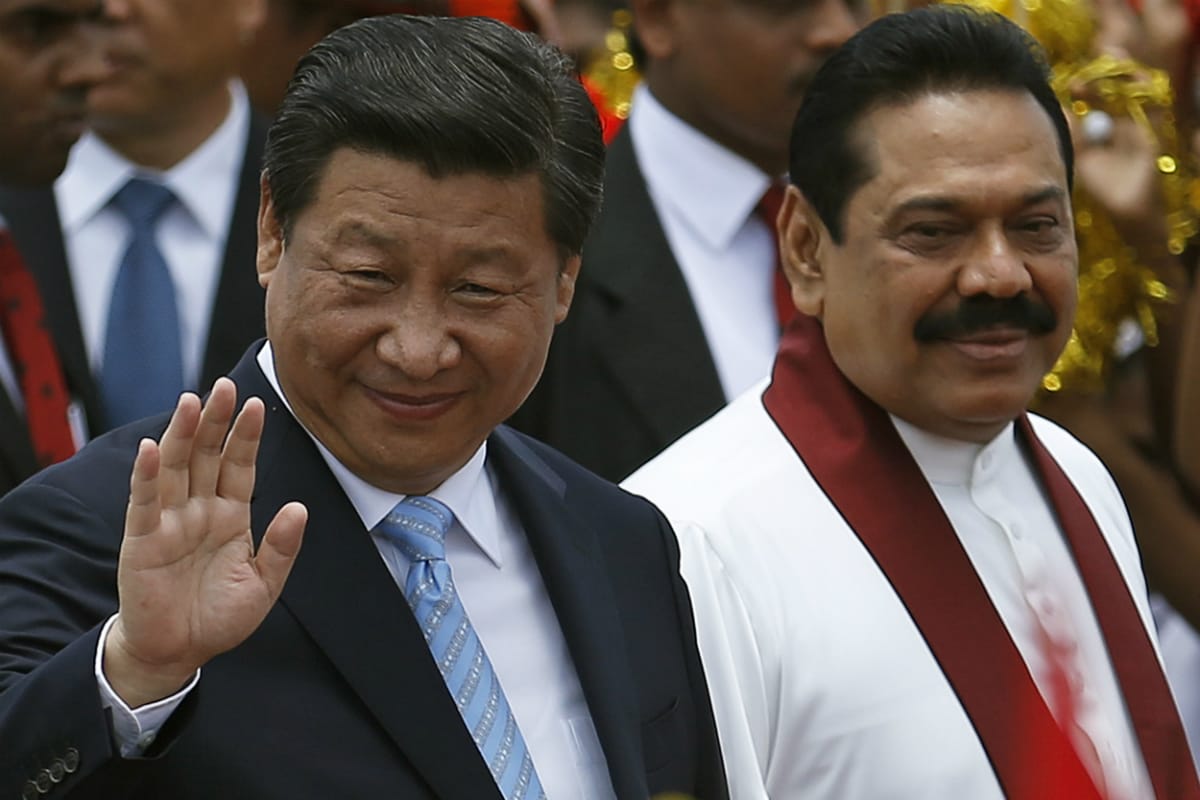Chinese Hand Behind Lanka Breaking Off ECT Pact at Colombo Port With India and Japan?

Sri Lanka celebrated its 73rd Independence Day on Thursday. The main event attended by the President and the Prime Minister took place in Colombo. The diplomats who were present were busy discussing Sri Lanka’s recent U-turn on involving India and Japan in its much-hyped Eastern Container Terminal (ECT) project at the Colombo Port.
Sri Lanka this week pulled out of joint partnership with India and Japan on the project, signalling a shift in its foreign policy. The news was received with shock in New Delhi and Tokyo.
According to some reliable sources, China is behind the recent developments. To checkmate two of its traditional rivals and neighbours India and Japan, Beijing allegedly put enormous pressure on the Rajapaksa brothers to go back on their words to New Delhi and Tokyo. They even allege that some of the protests against the partnership with these two nations were funded by the Chinese embassy in Sri Lanka. More than 25 port trade unions had threatened an industrial action against the government if it did not keep India and Japan out of the ECT project.
Against the backdrop of the development, India apparently sees a Chinese hand in orchestrating and funding the protests against the ECT deal by the trade unions in Sri Lanka.
ALSO READ | Sri Lanka Writes Off Strategic Port Deal With India & Japan After Week-Long Protests Over ‘Sell Out’
A report in the South Asia Monitor, citing Indian diplomatic sources, said India is of the “strong view” that Chinese agencies were funding some protests against the ECT deal. Earlier also, several media reports speculated that these protests against the ECT deal were being put together as a result of the rivalry between India and China for an increasing strategic foothold in Sri Lanka.
According to Sri Lankan journalist Kalani Kumarasinghe, in the wake of the island nation’s inability to repay the colossal loans from China, in December 2017, Colombo permitted China Merchants Port Holdings control over the deep sea port in Hambantota, located along the world’s busiest East-West shipping route. Since then the government has faced constant criticism and opposition from local groups, especially the trade unions. The government’s announcement of its decision to pull out from the tri-nation agreement came against the backdrop of some 23 trade unions resorting to a work-to-rule campaign against the deal, granting the ECT to an Indian conglomerate (the Adani Group) for development.
In an attempt to pacify local protesters, a proposal to develop the Western Terminal at the Colombo Port – instead of the Eastern Terminal — as a public-private partnership with India and Japan was announced by the government following a cabinet meeting on Tuesday.
The government said it would instead develop the site “as a wholly-owned container terminal of the Sri Lanka Ports Authority” for US $800 million. The decision came less than a month after an official visit by Indian foreign minister S Jaishankar in an attempt to move the deal forward. Following the announcement, New Delhi has bluntly asked Sri Lanka to honour the agreement to develop the Eastern Container Terminal, and not the Western Terminal. Even Japan, one of the top investors in Sri Lanka, firmly told the Rajapaksa government to honour its commitments.
ALSO READ | As Sri Lanka Reviews Handing over East Container Terminal to India, China Watches Closely
The Colombo Port is one of the busiest in the world. Japan had earlier helped Sri Lanka in developing the site. It had provided both financial and technical assistance in the 1980s and 1990s.
New Delhi is keen on the partnership because 70% of the transshipment business at the Colombo Port is linked to India.
According to a report in Sri Lanka’s leading English newspaper Daily Mirror, talks about the development of the ECT have been on since 2013, when the initial 400 metres of the 1,200-metre jetty was completed. Tenders were called for container handling cranes. But in 2015, with the Yahapalana government (Sirisena-Wickremesinghe government) elected to power, Arjuna Ranatunga, the-then minister of ports and shipping, scrapped the call for tenders, stating that the process was mired in corruption.
During the fag end of his presidency, Maithripala Sirisena had dropped a bombshell at a cabinet meeting, alleging that India’s external spying agency R&AW was trying to assassinate him. In the same meeting, Sirisena had vehemently opposed partnering with India in the ECT project. It had led to a complete breakdown of his relationship with the-then Prime Minister Ranil Wickremesinghe. Sirisena’s allegations had infuriated India and he had to issue a clarification saying he had never said anything like that.
After Gotabaya Rajapaksa won the presidency in November 2019 and his elder brother and former President Mahinda Rajapaksa led his party SLPP to a landslide win in the August 2020 parliamentary elections, India made several attempts to retain its hold over the Indian Ocean island nation. External affairs minister S Jaishankar and national security adviser Ajit Doval made special trips to Sri Lanka, assuring the government of all possible help from India.
However China, which has already pushed Sri Lanka into a debt trap, seems to have scuttled all important deals with India.
Sri Lanka is now in a catch-22 situation. It can’t hurt India’s sentiments as it is the closest neighbour, and it can’t ask China not to meddle as it has borrowed billions from that country.

“평생 사상가. 웹 광신자. 좀비 중독자. 커뮤니케이터. 창조자. 프리랜서 여행 애호가.”
